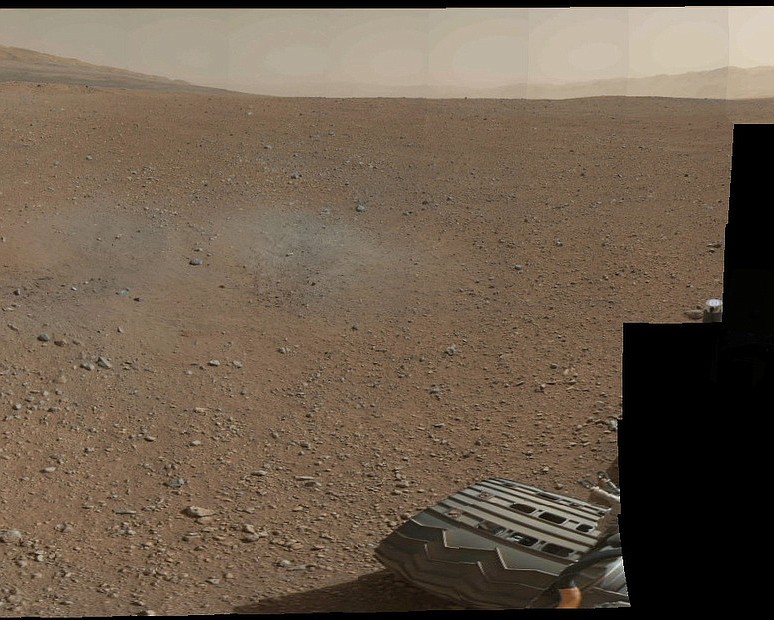 This image provided by NASA Thursday, Aug. 9, 2012, shows the first 360-degree color panorama taken on Mars by NASA's Curiosity rover. The panorama was stitched together using thumbnail images taken by the rover's mast camera. Curiosity landed in Gale Crater on Mars on August 5, 2012 to begin a two-year mission.
This image provided by NASA Thursday, Aug. 9, 2012, shows the first 360-degree color panorama taken on Mars by NASA's Curiosity rover. The panorama was stitched together using thumbnail images taken by the rover's mast camera. Curiosity landed in Gale Crater on Mars on August 5, 2012 to begin a two-year mission.PASADENA, Calif. - The photo-snapping rover Curiosity returned another postcard from Mars on Thursday - the first 360-degree color panorama of Gale Crater.
Scientists admired the sweeping vista. In the distance was the base of Mount Sharp, a three-mile-high mountain rising from the crater floor, where the six-wheel rover planned to go.
"It's very exciting to think about getting there, but it is quite a ways away," said mission scientist Dawn Sumner of the University of California, Davis.
Though it's the sharpest view yet of the landing site, the panorama was stitched together from thumbnails while scientists waited for better quality pictures to be downloaded.
Since safely landing Sunday night, Curiosity has dazzled scientists with peeks of its new home that at first glance seems similar to California's Mojave Desert. The initial pictures were fuzzy and black-and-white.
Earlier this week, the rover raised its mast containing high-definition and navigation cameras that have provided better views.
The car-size rover remained healthy and busy testing its various instruments. Several pebbles landed on the rover's deck next to its radiation sensor during the final seconds of landing as it was lowered to the ground, but project managers said the stones posed no risk.
Curiosity "continues to behave basically flawlessly," said mission manager Mike Watkins of the NASA Propulsion Laboratory, which manages the $2.5 billion mission.
Over the weekend, the rover will take a break so its computers can get a software upgrade in a process similar to a laptop having periodic updates to its operating systems. The upgrade will take several days. Data download will continue during that time, but the rover won't be doing anything new.
During its two-year mission, the roaming laboratory will analyze rocks and soil in search of the chemical building blocks of life, and determine whether there were habitable conditions where microbes could thrive. As high-tech as Curiosity is, it can't directly look for past or present life; future missions would be needed to answer that question.
Curiosity arrived on Mars Sunday night after traveling more than eight months and 352 million miles. Because of its heft, it couldn't land using air bags like its predecessors. Curiosity made a precision landing, relying on a heat shield, supersonic parachute, retrorockets and cables that lowered it inside Gale Crater.
Since the thrilling landing, the pace on the surface has been deliberately slower.
Curiosity is the most complex interplanetary rover ever designed, and engineers are taking their time performing health checkups. The rover will not make its first drive or move its robotic arm for weeks.
